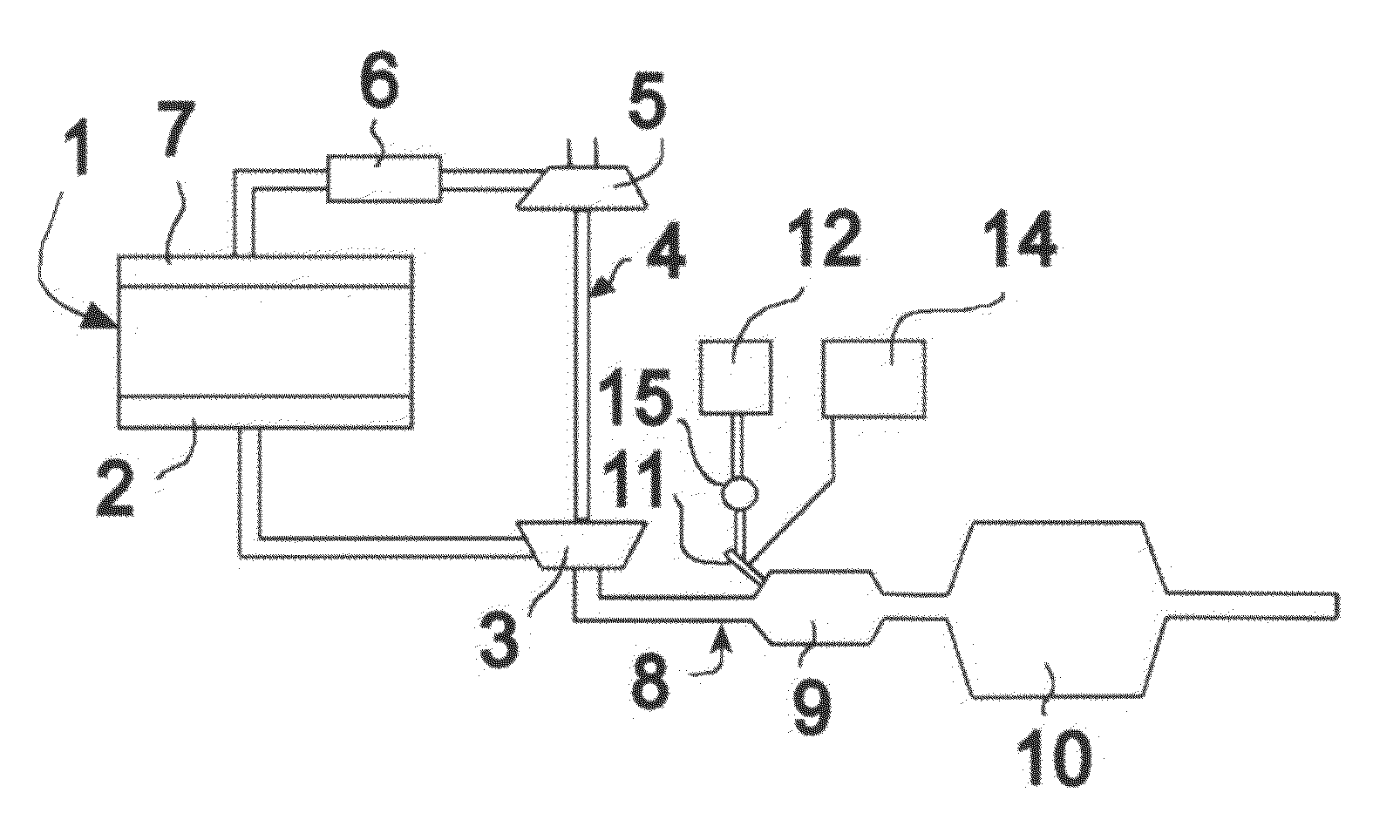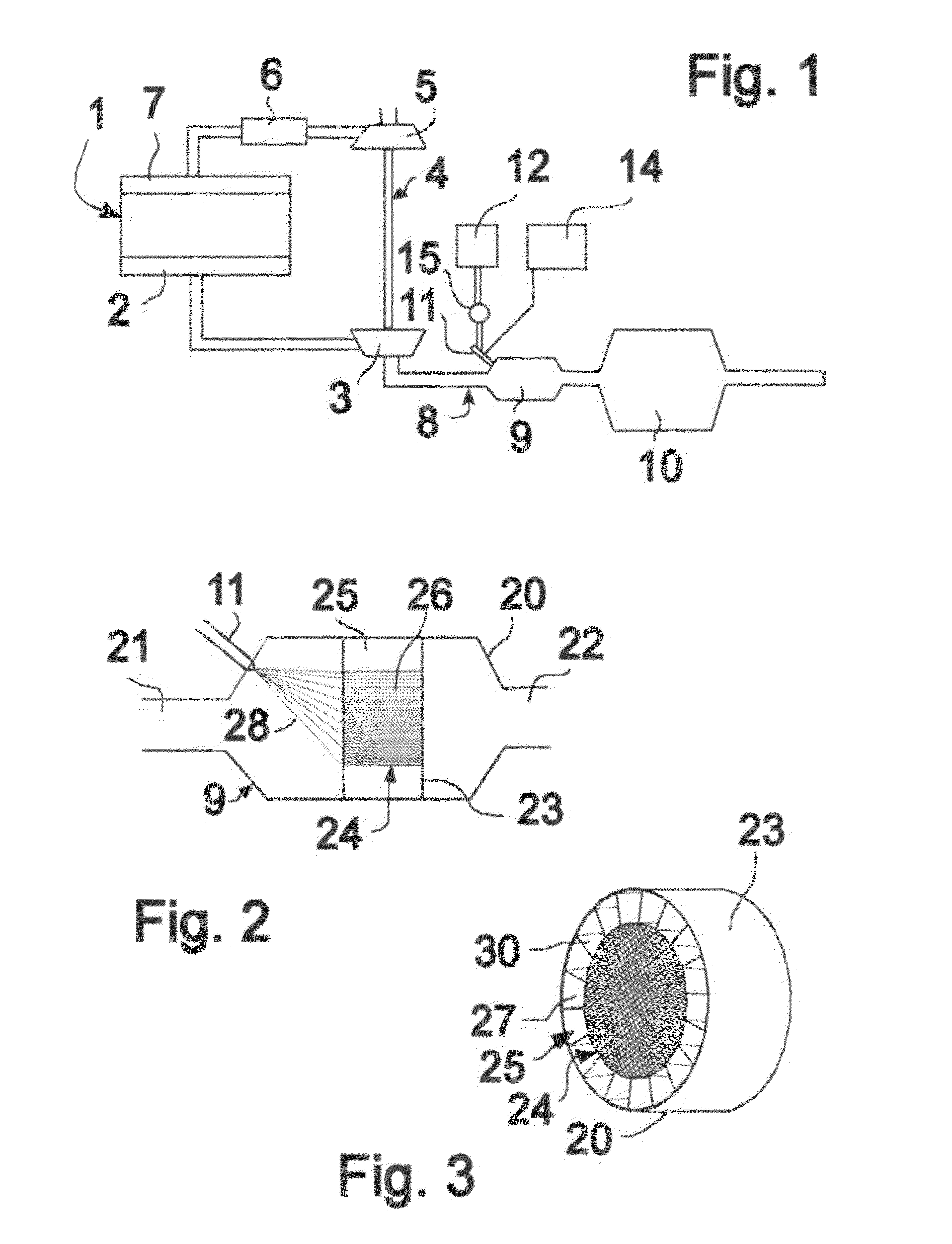Hydrolysis catalyst with larger duct cross-sections in the peripheral portion than in the central portion, and method for hydrolysis of a uric substance
a technology of hydrolysis catalyst and urea, which is applied in the direction of machine/engine, separation process, transportation and packaging, etc., can solve the problems of urea crystallization, blockage of exhaust line or other serious operational malfunctions, and urea crystallization, so as to achieve less expensive and simple
- Summary
- Abstract
- Description
- Claims
- Application Information
AI Technical Summary
Benefits of technology
Problems solved by technology
Method used
Image
Examples
Embodiment Construction
[0019]FIG. 1 depicts schematically an exhaust system for a multi-cylinder combustion engine 1, e.g. a diesel engine used to power a heavy vehicle. On the exhaust side of the engine 1, there is an exhaust manifold 2 from which the exhaust gases are first led to an exhaust turbine 3 which forms part of a turbocompressor 4 which also comprises a compressor 5 for supercharging of inlet air to the engine. The engine's inlet air is led from the compressor 5 to the engine 1 via a charge air cooler 6 and an inlet manifold 7. After the exhaust gases have passed through the turbine 3, they are led in an exhaust line 8 to a hydrolysis catalyst 9 and an SCR catalyst 10 before proceeding on in the exhaust line 8 to an undepicted silencer. A valve 11 is provided immediately upstream of the hydrolysis catalyst 9 for the injection of a suitable uric substance, which in this example takes the form of urea, into the hydrolysis catalyst 9 from a container 12 provided for the purpose. The valve 11 is c...
PUM
| Property | Measurement | Unit |
|---|---|---|
| Angle | aaaaa | aaaaa |
| Angle | aaaaa | aaaaa |
| Angle | aaaaa | aaaaa |
Abstract
Description
Claims
Application Information
 Login to View More
Login to View More - R&D
- Intellectual Property
- Life Sciences
- Materials
- Tech Scout
- Unparalleled Data Quality
- Higher Quality Content
- 60% Fewer Hallucinations
Browse by: Latest US Patents, China's latest patents, Technical Efficacy Thesaurus, Application Domain, Technology Topic, Popular Technical Reports.
© 2025 PatSnap. All rights reserved.Legal|Privacy policy|Modern Slavery Act Transparency Statement|Sitemap|About US| Contact US: help@patsnap.com


